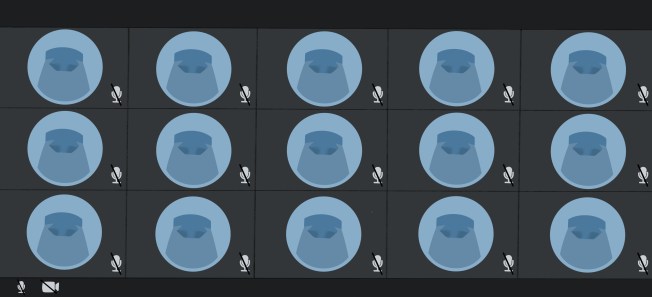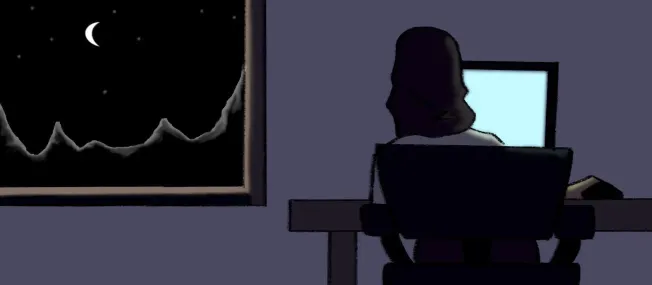Faisal Karimi and Wahab Siddiqi, respectively founder and editor-in-chief of the Afghanistan Women’s News Agency, were among the first journalists to flee Afghanistan after the Taliban retook control of the country in August 2021. After escaping the country undetected with nearly two dozen newsroom colleagues and family members a week after the fall of Kabul, they made their way to a refugee camp in Albania. Then, they got to work rebuilding the newsroom they had left behind.
More than three years later, the two journalists run the agency from exile in the United States. To get out the news, they rely on the reporting of 15 female journalists hired in 10 provinces to replace the staff who fled. As the Taliban has become increasingly hostile to women journalists and the exile press, the newsroom takes extreme security precautions. Zoom meetings take place with a strict “cameras off” policy so that the women won’t be compromised if they recognize each other on the street.
In June, CPJ interviewed Karimi and Siddiqi in Columbia, Missouri, where they were attending a safety training for journalists in exile at the University of Missouri’s School of Journalism. During the interview, both men checked their phones often, explaining the importance of remaining available at all times for their reporters.
This interview has been edited for length and clarity.
Can you describe the atmosphere for the press immediately after the Taliban takeover?
Karimi: When the Taliban took over, our hope collapsed overnight. We were working journalists for eight years before the takeover and we used our journalism against extremist Taliban ideology. Our work aimed to promote democratic values and human rights in our country by creating a newsroom and outlet for female journalists. Eight years of such work was evidence enough for the Taliban to attack us.
Siddiqi: Social norms in Afghanistan regarding women’s rights are very sensitive and this was the main reason we had to flee. When you are talking about women’s rights in Afghanistan, you are not only facing danger from the Taliban, but also from others in the country who adhere to such radical beliefs.
I remember when we were working in Herat, our office was in a very safe location, but even our neighbors would question why so many women were entering the building. They assumed there was some ethical wrongdoing. Since our work highlighted women’s issues, we were in danger from the Taliban and the pervasive misogyny in the society at large.
The Afghanistan Women’s News Agency is one of just a handful of women-focused outlets covering Afghanistan, like Rukshana Media and Zan Times. What led you to found it in 2016?
Karimi: Siddiqi and I both taught at Herat University. As a professor of journalism, I witnessed my female students struggle and face a lack of resources and opportunities every day. The disparity between them and my male students was blatantly obvious. Lack of access to media equipment, gender inequality in the newsroom, harassment and discrimination was a daily reality for these women.
In light of this, I decided to create a safe environment for my female students to publish their stories, [to] access media equipment and the internet eight years before the Taliban takeover. Although the Taliban was not yet in power, the extremist ideology had already begun to spread rapidly.
Families were understandably concerned when their daughters went to school or the newsroom, but when we established this newsroom solely for women, almost all female journalists across Herat came to work there. As a professor, I had the trust of these women’s families. That’s why I, as a man, was able to set up this space and reassure the families that it was safe.
Part of your staff is in exile, but you still have many female journalists based in Afghanistan. What’s their experience like?
Karimi: All of our female reporters on the ground have to remain anonymous for their safety as per our contract. Their names are never published with their stories. There are currently 15 female journalists working with us, spread across 10 provinces. Some of them are our former interns whom we hired permanently and some of them are currently interns who receive training through Zoom, so that they can be the next generation of female reporters. All of them are actively reporting, even interns, as they learn and are simultaneously paid for their work.
Siddiqi: It’s important to add that our reporters know each other by name only. Our reporters have never met or seen each other’s faces since we require them to turn their cameras off during virtual meetings. We are extremely strict about our security protocols in order to ensure that if one of our reporters faces Taliban retaliation, their colleagues will remain safe. Our reporters know that even a minor mistake can put our whole newsroom in danger.

It is obvious that these women are well aware of the danger that comes with being journalists. Why are they still in the country and choosing to report despite these risks?
Siddiqi: From my understanding and through my conversations with them, there are two main reasons. One, these women are wholly committed to their work. When I am talking with them, I learn that they work more than eight hours a day because they love their job. They all know the impact that they are making in the current environment. Two, financial security is also a huge part of their choice to report. It is rare for women to work and receive salaries in the country under the Taliban. AWNA pays its journalists and this provides them with some level of control and financial independence.
Karimi: These female journalists know that the stakes are very high. Many times I have told them that their security is our priority. We don’t want any report or story that puts their safety at risk, but they still don’t prioritize themselves. They prioritize their reporting. Nobody can stop them from making their voices heard even in the most repressive atmosphere.
What is it like for you when your reporters are so far away while you are in exile?
Karimi: To be honest, I am not comfortable. Sometimes I think something bad has happened to a colleague. Trying to minimize their risk is one of our strategies and biggest challenges. I am very concerned every single day.
Have any of the female journalists working for AWNA had dangerous encounters with the Taliban?
Siddiqi: Just a few days ago, one of our female reporters called me from Kabul while she was attempting to report on a business exhibition. Upon entering the venue, she was detained by the Taliban. In the commotion of a large crowd, she somehow managed to hide herself and escaped without facing arrest.
I called her after that and I reiterated that this cannot be the norm. I told her that we cannot lose her and that without her, there would be no reporting. My colleague replied that she tries her best and knows all the newsroom security protocols. But even for non-political events, this is the risk and the reality for female journalists in the country.

How has reporting from exile shaped your view of the future of the media in Afghanistan?
Karimi: In my opinion, the lack of free and independent media in the country has created a need for reliable media in exile to combat Taliban propaganda and control. There is a lack of female-run media. We have bypassed the Taliban firewall by providing information from exile to empower people within the country, especially women.
Siddiqi: There are so many Afghan women who are students, photographers, activists, and writers, as well as journalists who can no longer publicize their work on their own channels due to safety concerns. Many of them have found a place in AWNA in order to share their work and add value to the media atmosphere. These are all citizens and female journalists. There are thousands of women who have something to share, journalists by training or not, who are acting as citizen journalists. They have something to show and we are dedicated to uplifting it.
Do you both hope to return to your country if things change?
Siddiqi: I chose to leave my parents, siblings, everything in order to escape the regime.
Life is not easy for me here. I left my memories and emotions in Afghanistan. Everyday these memories disturb me. I was educated and began my career in Afghanistan and I believe I owe my country.
Karimi: Of course I hope to go back to my country. Right now, I feel that I have three lives as an exiled journalist: The first is the life I left behind in Afghanistan, which includes most of my family. Half of my mind and heart remains there. My second life is this one in exile where I am forced to rebuild my personal and professional life from scratch. My third life revolves around how to keep my colleagues safe and to honor their mission as female journalists. I am constantly navigating these three lives and it is a devastating reality.
What is your hope for Afghan women journalists in the future?
Siddiqi: There is no hope bigger than Afghan women having their basic human rights and access to education. If there is no education for women, there is no understanding of their reality and rights. If there is no understanding in a society, there is no justice. If there is no justice, we are no longer in a human society, but in a jungle. The Taliban has shut off all the doors that were once available for Afghan women and together, we are trying to pry them open.
This content originally appeared on Committee to Protect Journalists and was authored by Ananya Bhasin.
This post was originally published on Radio Free.